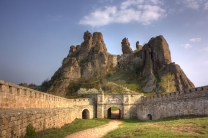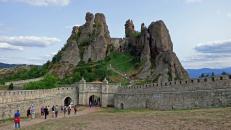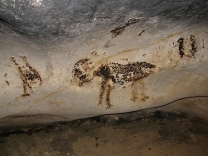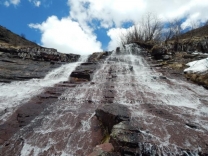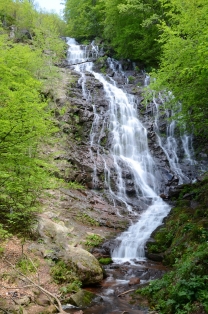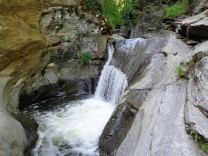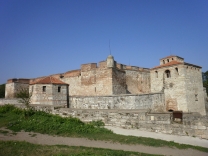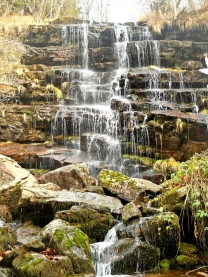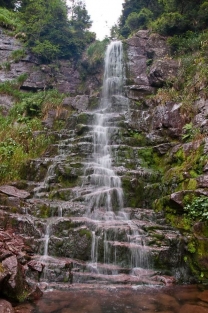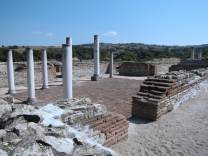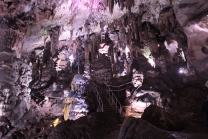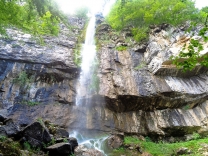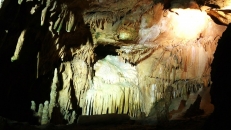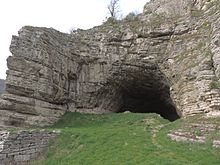
Kozarnika
Cave and archaeological site in BulgariaKozarnika or Peshtera Kozarnika (Bulgarian: Пещера Козарника, "The Goat Shed") is a cave in northwestern Bulgaria that was used as a hunters’ shelter as early as the Lower Paleolithic (1.6-1.4 million BP). It marks an older route of early human migration from Africa to Europe via the Balkans, prior to the currently suggested route across Gibraltar. The cave probably keeps the earliest evidence of human symbolic behaviour and the earliest European Gravette flint assemblages came to light here.
Kozarnika cave is located 6 km (4 mi) from the town of Belogradchik in northwestern Bulgaria, on the northern slopes of the Balkan Mountains, close to the Danubian Plain. It is opened to the south, at 85 m (279 ft) above the valley. With its length of 210 m (689 ft), the cave is among the small-sized in the Belogradchick karst region. Studies over the course of two decades uncovered 21 geological layers there, containing (bottom to top) archaeological complexes of Early Lower Paleolithic (layers 13 - 11a), Middle Paleolithic (layers 10b - 9a), Early Upper Paleolithic (layer 6/7), a sequence of an original Paleolithic bladelets industry with backed pieces that scholars called Kozarnikian (layers 5c - 3a), Early Neolithic, Late Copper age, Late Bronze Age, Medieval and Late medieval periods.
The Kozarnika cave project started in 1984. Since 1996, it has been headed by Dr. Prof. Nikolay Sirakov (Archaeological Institute and Museum of Bulgarian Academy of Sciences, Sofia, Bulgaria) and Dr. Jean-Luc Guadelli (IPGQ-UMR5199 of French National Center for Scientific Research, Bordeaux-France).
In the ground layers, dated to 1.6–1.4 million BP (using palaeomagnetism, which determines age using past patterns of reversals in the Earth's magnetic field and analyses of both the microfauna and the macrofauna), archaeologists have discovered a human molar tooth (considered to be the earliest...






